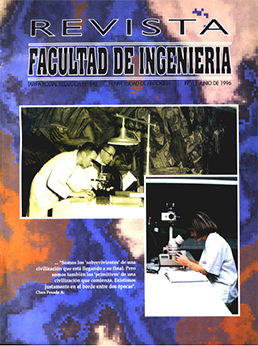Reducción catalítica de NO y N2O por CO sobre Co-ZSM-5
DOI:
https://doi.org/10.17533/udea.redin.325556Palabras clave:
Co-ZSM-5, NOx, reducción de NO, contaminación atmosféricaResumen
Varios catalizadores a base de ZSM-5 con Co se ensayaron en la reducción catalítica de NO y N20 usando CO como agente reductor y en presencia de cantidades variables de 02. El cobalto se incorporó en la zeolita ZSM-5 por los métodos de intercambio iónico, impregnación y sustitución. ZSM-5 intercambiada con Co presentó las más altas conversiones de NO (80% a 500ºC), en presencia de 3000 ppm de 02; al adicionar 25. 700 ppm de 02 la conversión disminuyó notablemente, lo cual muestra un efecto inhibidor del 02. Los catalizadores sustituido e impregnado fueron menos activos para la reducción del NO. Con todos los catalizadores se lograron conversiones del 70-90% para el N20. Adicionalmente, no se presentó desactivación marcada del catalizador con el tiempo.Descargas
Citas
Iwamoto, M y Mizuno, N. Journal ot automovile engineering, 1993, 207, 23-32. DOI: https://doi.org/10.1243/PIME_PROC_1993_207_156_02
Li, Yuejin y Armor, J. N. Applied Catalysis B, 1992, 1, 31-402. DOI: https://doi.org/10.1016/0926-3373(92)80050-A
Li, Yuejin, Battavio, P. J., y Armor, J. N. Journal of Catalysis, 1993, 142, 561-571. DOI: https://doi.org/10.1006/jcat.1993.1231
Shiralkar, V. P. y Clearfield, A. Zeolites, 1989, 9, 363-370. DOI: https://doi.org/10.1016/0144-2449(89)90089-4
LINDE, Molecular Sieves. Catalyst Bulletin. Union Carbide: adsorbents and catalysts.
Montes de C., C., Zapata N., M y Villa, A. L. Revista Química, Actualidad y Futuro, 1995, 5, 48- 54.
Descargas
Publicado
Cómo citar
Número
Sección
Licencia
Los artículos disponibles en la Revista Facultad de Ingeniería, Universidad de Antioquia están bajo la licencia Creative Commons Attribution BY-NC-SA 4.0.
Eres libre de:
Compartir — copiar y redistribuir el material en cualquier medio o formato
Adaptar : remezclar, transformar y construir sobre el material.
Bajo los siguientes términos:
Reconocimiento : debe otorgar el crédito correspondiente , proporcionar un enlace a la licencia e indicar si se realizaron cambios . Puede hacerlo de cualquier manera razonable, pero no de ninguna manera que sugiera que el licenciante lo respalda a usted o su uso.
No comercial : no puede utilizar el material con fines comerciales .
Compartir igual : si remezcla, transforma o construye a partir del material, debe distribuir sus contribuciones bajo la misma licencia que el original.
El material publicado por la revista puede ser distribuido, copiado y exhibido por terceros si se dan los respectivos créditos a la revista, sin ningún costo. No se puede obtener ningún beneficio comercial y las obras derivadas tienen que estar bajo los mismos términos de licencia que el trabajo original.










 Twitter
Twitter